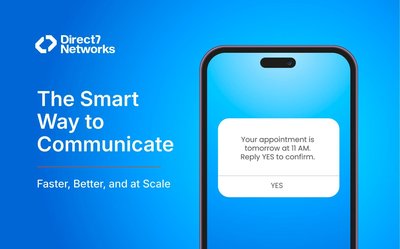
A Comprehensive Guide to Identifying and Avoiding Fake Text Message Scams
In this blog, we delve into the crucial task of safeguarding your business against fake text message scams. Explore the tactics used by scammers to exploit vulnerabilities in mobile communication, and gain valuable insights into identifying and evading these deceptive schemes.
In our increasingly connected world, scammers have become more sophisticated, particularly with the rise of mobile communication. Fake text messages, also known as SMS scams or "smishing" attacks, are used by these criminals to trick people into giving away personal information, downloading harmful software, or clicking on malicious links. Understanding these threats, how they work, and how to protect yourself is crucial to staying safe. This guide will help you identify and avoid fake text message scams.
What Are Fake Text Messages?
Fake text messages are sent through SMS (Short Message Service) that aim to deceive or trick the recipient. These messages often pretend to be from trustworthy organizations, like banks, government agencies, or popular retailers. Their goal is to win the recipient's trust and convince them to perform certain actions.
How Do Text Scams Target People?
Text scams target people through various tactics, including:
Urgent Requests:
Scammers often create a false sense of urgency, using claims that immediate action is required to avoid negative consequences or receive a reward.
Impersonation:
They pose as trusted institutions like banks or governments to gain trust and compliance from victims.
Phishing Links
Scammers often send text messages with links to fake websites that aim to steal personal information or install malware on the victim's device.
Common Text Scams
Financial Scams
Messages claiming issues with your bank account or transactions, asking for account details or PINs.
Prize Scams
Notifications of winning a prize or lottery, requesting personal information or payment to claim the reward.
Package Delivery Scams
Fake messages regarding missed deliveries, prompting recipients to provide personal details or click on malicious links.
How to Identify a Fake Text Message?
Identifying a fake text message involves careful scrutiny of various elements:
Check the Sender's Number
Take a close look at the sender's phone number. Scammers often use unfamiliar or random numbers to send fake messages. If the number seems suspicious or doesn't match the organization it claims to represent, it's likely a scam.
Verify the Sender's Identity
Legitimate organizations typically identify themselves clearly in text messages. Be wary of messages that lack proper identification or use generic greetings like "Dear Customer" instead of your name.
Pay Attention to Grammar and Spelling
Many fake text messages contain grammatical errors, spelling mistakes, or awkward phrasing. Legitimate businesses usually proofread their communications carefully, so poor language quality can be a red flag.
Assess the Tone and Content:
Fake text messages often use overly urgent or threatening language to prompt immediate action. They may also promise unrealistic rewards or incentives to lure recipients into responding. If the message seems too good to be true or instills a sense of panic, it's likely a scam.
Verify Requests for Personal Information
Be cautious of messages requesting sensitive information such as passwords, account numbers, or social security numbers. Legitimate organizations rarely ask for such details via text message. When in doubt, contact the company directly using trusted contact information to verify the request's authenticity.
Scrutinize Embedded Links:
Hover over any links in the message (without clicking on them) to see the URL's destination. Be wary of shortened URLs or suspicious-looking domains, as they could lead to phishing websites that steal your information.
Cross-Check Information:
If you receive a message claiming to be from a familiar organization, verify the information independently. Visit the company's official website or contact their customer service directly to confirm the message's legitimacy.
Trust Your Instincts
If something about the message feels off or raises suspicion, trust your instincts. It's better to err on the side of caution and refrain from interacting with the message than risk falling victim to a scam.
How To Handle A Fake Text Message Immediate Steps if You Suspect a Fake Text Message
- Do Not Respond: Refrain from replying to the message or clicking any links within it.
- Block the Sender: Prevent further communication by blocking the sender's number on your device.
- Report the Scam: Inform your mobile carrier and relevant authorities about the scam to help protect others from falling victim
Best Practices to Ensure Your Messages Are Safe and Secure
- Verify Recipients: Always double-check the recipient details before sending sensitive information to avoid any accidental data leakage.
- Use Trusted Platforms: Choose secure messaging platforms like D7 Networks to reduce the risk of phishing and data breaches. The D7 SMS can be easily integrated into your business and enables you to send messages more reliably and cost-effectively.
Protecting yourself from fake text messages requires vigilance and knowledge. By understanding how these scams work and following the steps outlined above, you can significantly reduce your risk of falling victim to these deceptive tactics. Stay alert, trust your instincts, and always verify the authenticity of unexpected messages. Remember, legitimate companies will never pressure you to share sensitive information via text.
Frequently Asked Questions
1. What are the common signs of a fake text message?
Look for unfamiliar sender numbers, generic greetings, urgent or threatening language, poor grammar, or suspicious links.
2. How does D7 Networks enhance SMS security?
D7 Networks provides a secure SMS platform that reduces the risk of phishing attacks through advanced security protocols and reliable message delivery.
3. Can businesses protect their customers from text scams?
Businesses can adopt secure messaging solutions like D7 Networks, educate customers about identifying scams, and ensure that official messages are clearly identifiable.




